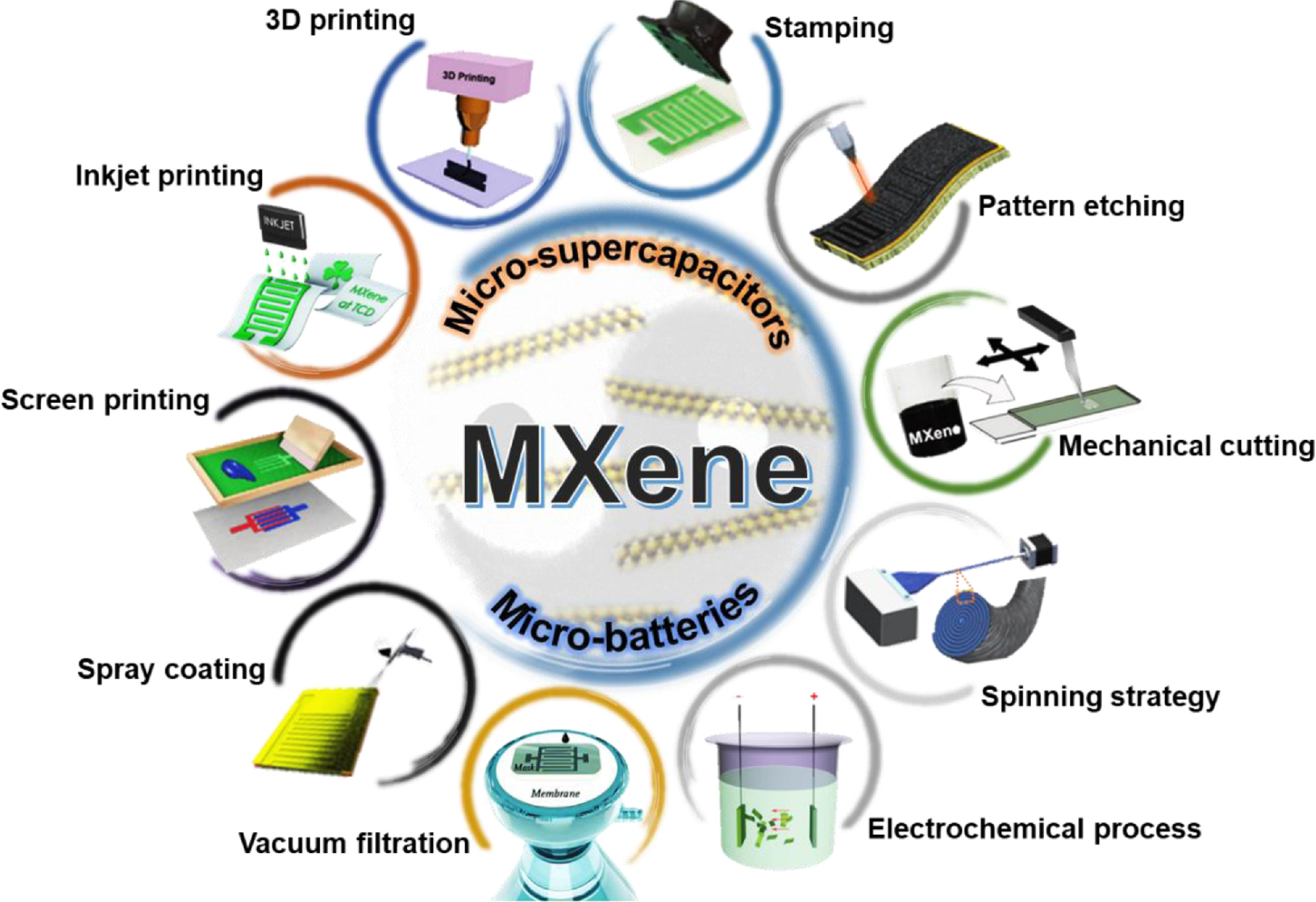Y.Y. Zhu, S. Wang, J.X. Ma, P. Das, S.H. Zheng, Z.-S. Wu*
Energy Storage Materials, 2022, 51, 500-526.
DOI: 10.1016/j.ensm.2022.06.044 [PDF]

Two-dimensional MXene-based materials possess great potential for microscale energy storage devices (MESDs) like micro-supercapacitors and micro-batteries, prospecting applications in wearable and miniaturized electronics. So far, various microfabrication techniques have been applied for developing MXene microelectrodes of MESDs. Different techniques not only determine the device configuration but also affect the structure of MXene microelectrodes and electrochemical performance of MESDs. Herein, we present a critical and comprehensive review of the state-of-the-art progress in design and microfabrication strategies of MXene for MESDs. First, we systematically outline the advantages and shortcomings of these microfabrication techniques, including traditional methods of mask-assisted vacuum filtration and spray printing, automated strategies like laser or ion-beam-based pattern etching, highly scalable printing techniques and unique fiber-spinning approach. Further, we fully take into consideration the preparation of MXene precursor suitable for different methods, elaborately compare the performance metrics achieved by using different methods and discuss unique instances of device integration and related applications. To promote the further development of MXene-based MESDs, the relevant technical challenges are identified and future perspectives are briefly discussed. We believe that this review will guide the rational fabrication of MXene-based MESDs with excellent performance and multi-functionality.